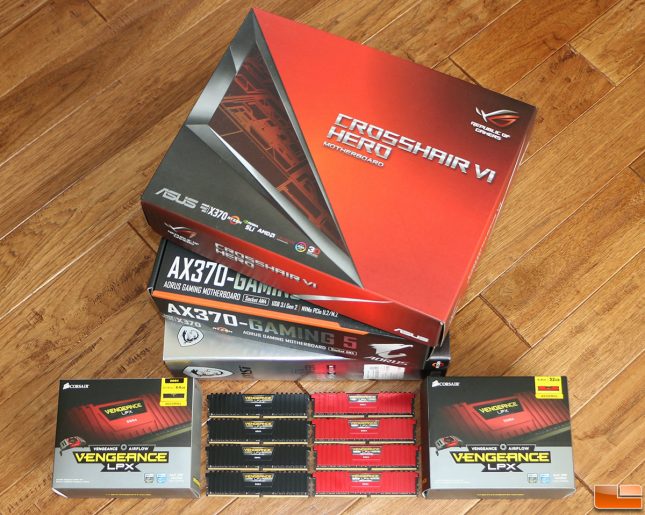AMD Ryzen – Single-Rank Versus Dual-Rank DDR4 Memory Performance
Final Thoughts and Conclusions

So, after running hundreds of benchmarks we can conclude that the AMD X370 platform memory expectations greatly exceed that of what AMD claims from testing with these particular Corsair LPX DDR4 modules. Remember, AMD Ryzen platforms officially support the following memory configurations:
- Dual-Rank w/ 4 DIMM: Up to 1866 MHz
- Dual-Rank w/ 2 DIMM: Up to 2400 MHz
- Single-Rank w/ 4 DIMM: Up to 2133 MHz
- Single-Rank w/ 2 DIMM: Up to 2667 MHz
Our testing showed that we were able to get these results:
- Dual-Rank w/ 4 DIMM: Up to 2666 MHz
- Dual-Rank w/ 2 DIMM: Up to 2666 MHz
- Single-Rank w/ 4 DIMM: Up to 2666 MHz
- Single-Rank w/ 2 DIMM: Up to 3200 MHz
We were honestly expecting to see one AMD X370 board scale better with memory than another, but unfortunately that wasn’t the case here today. That doesn’t make for the most interesting charts, but we are glad that all three of these boards did well with memory. AMD and the board makers is working on improving the AMD Generic Encapsulated Software Architecture (AGESA) code and they expect that more memory improvements will be coming soon.
So, maybe later we will see some differences between the memory performance on the MSI X370 XPOWER GAMING TITANIUM ($299.99), GIGABYTE GA-AX370-Gaming 5 ($194.99) and ASUS ROG Crosshair VI Hero ($254.99) motherboards. Right now there is not a huge difference between them with regards to DDR4 memory performance and that is actually a good thing for the community!
More AMD Ryzen Coverage on Legit Reviews:
AMD Ryzen 7 1800X, 1700X and 1700 Processor Reviews
AMD Ryzen versus Intel Kaby Lake – Gaming Performance
AMD Ryzen 7 1700 Processor Overclocking
AMD Ryzen 7 DDR4 Memory Scaling Performance
Picking The Right AMD AM4 Motherboard For Ryzen
Where are all the AMD AM4 Motherboads?
